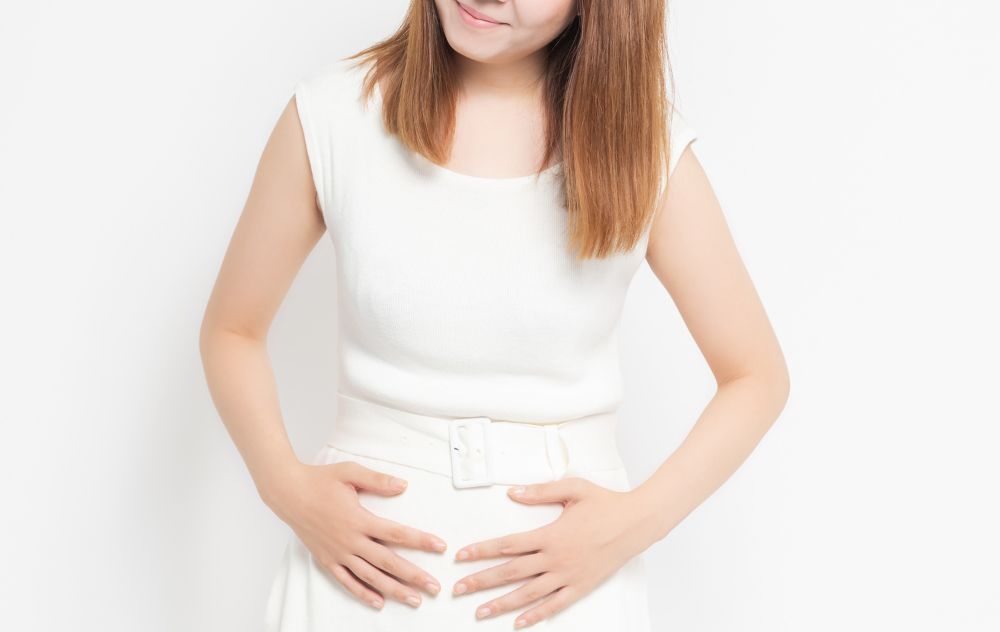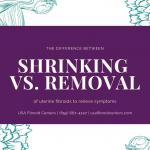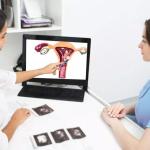
Dealing with Fibroid Tumors in the Uterus
Uterine fibroids are common, non-cancerous tumors that develop in the uterine wall, and affect up to 80 percent of women during their lifetimes. Although not all fibroid tumors are symptomatic, they can lead to painful, uncomfortable, and disruptive symptoms. In some cases, uterine fibroid tumors cause damage to surrounding organs, such as the bladder and bowel. Fibroids can also impact fertility.
In this blog, we will explore,
- How Do You Get Rid of Fibroids In Your Uterus?
- Fibroid Treatment Options
- What Is the Best Fibroid Tumor Treatment For Me?
- Will Home Remedies Get Rid of Fibroid Tumors?
Fibroid tumor treatment is recommended when fibroid symptoms affect normal daily activities and quality of life. Common fibroid symptoms include heavy and prolonged menstruation, pelvic pain, frequent urination, and pain during sex. Women with fibroids often report missing work, canceling social engagements, or avoiding intimacy due to their symptoms. This can lead to low self-esteem, anxiety, and depression.
There are several treatment options for fibroid tumors, including surgical and non-surgical methods. Below, we cover the benefits and drawbacks of two types of fibroid surgeries: hysterectomy and myomectomy. We also discuss uterine fibroid embolization (UFE), a minimally invasive, office-based fibroid treatment that shrinks fibroids and can alleviate symptoms while leaving the uterus intact.
At USA Fibroid Centers, we want you to be familiar with your fibroid tumor treatment options so you can make an informed treatment decision. To learn more about fibroid tumors, uterine fibroid embolization, and other fibroid treatments, talk to one of our leading fibroid specialists.
SCHEDULE AN INITIAL CONSULTATION
How Do You Get Rid of Fibroids In Your Uterus?
When addressing fibroid tumors in the uterus, numerous treatment methods are available, each with distinct procedures, benefits, recovery times, and outcomes. Common approaches include hysterectomy, myomectomy, and uterine fibroid embolization.
As you explore treatment options, it is essential to weigh factors such as safety, efficacy, recovery, and the likelihood of recurrence associated with each fibroid treatment type.
Fibroid Treatment Options
If you are considering fibroid tumor treatment, remember that the size, location, and number of fibroids may impact your treatment options. We recommend consulting our fibroid specialists for personalized treatment recommendations.
Hysterectomy
Hysterectomy is the complete surgical removal of the uterus. In some cases, surrounding organs such as the cervix, fallopian tubes, and ovaries are also removed during surgery. A hysterectomy is 100 percent effective at eliminating fibroids and preventing their return, but it also requires some crucial considerations.
As a major surgery, hysterectomy carries inherent risks, including excessive blood loss, infection, blood clots, and an adverse reaction to general anesthesia. There is also a risk of damage to surrounding organs like the bladder and bowel.
If you choose to have a hysterectomy, you will need to stay in the hospital for one to three days afterward for close observation and post-surgical pain management. Your hospital stay will be followed by a six-to-eight-week recovery period at home.
For those aspiring to conceive, seeking to avoid surgery, or constrained by recovery time, uterine fibroid embolization remains a viable treatment option. However, individual cases vary, and there are instances where a hysterectomy becomes a necessary and appropriate choice.
Myomectomy
Myomectomy, another type of fibroid surgery, removes only individual fibroid tumors from the uterus. Myomectomy’s viability as a treatment option may depend on the size, location, and number of your fibroid tumors.
Similar to hysterectomy, myomectomy involves surgical risks, including excessive blood loss, infection, blood clots, and an adverse reaction to general anesthesia. If bleeding cannot be controlled during surgery, a hysterectomy may be necessary. Research has also suggested that women who undergo a myomectomy have a higher likelihood of needing a hysterectomy within five years.
While myomectomy effectively removes existing fibroids, it has a higher rate of post-treatment fibroid regrowth than other fibroid treatments. You may also experience new fibroid tumors in other parts of the uterus. Fibroids cannot regrow following a hysterectomy, and fibroid growth is rare after uterine fibroid embolization.
While it is often possible to get pregnant and give birth after myomectomy, you may face a higher risk of complications with pregnancy and childbirth due to scar tissue within the uterus. The likelihood of these risks varies from person to person, so talk to your doctor for a personal risk assessment.
Uterine Fibroid Embolization (UFE)
Uterine fibroid embolization (UFE) is a minimally invasive non-surgical fibroid treatment that shrinks fibroid tumors over time. Eventually, the tissue is reabsorbed by the body. The procedure is performed under light sedation, not general anesthesia. When you receive UFE, an interventional radiologist uses real-time imaging to guide a catheter into the main uterine artery feeding your fibroid tumor. Then, they inject embolic agents (safe, inert synthetic material) through the catheter into the artery. These agents permanently block the fibroid’s blood flow, causing the tumor to shrink and wither away over the following weeks and months. The embolic material remains present at the fibroid site to prevent regrowth. Your symptoms should improve as your fibroid tumor shrinks.
Uterine fibroid embolization offers many benefits compared to fibroid surgery. UFE involves less pain, lower risk, and a shorter recovery of only one to two weeks. It does not require a hospital stay, stitches, or general anesthesia and is 99 percent effective when performed by one of the skilled fibroid specialists at USA Fibroid Centers. Regrowth and new growth of fibroid tumors in other areas of the uterus are unusual after UFE.
Women desiring pregnancy should know that uterine fibroid embolization leaves the uterus intact, preserving fertility. Many women have had a successful pregnancy and childbirth after UFE treatment.
Although some women are given fibroid surgery as their only treatment option, this is rarely true. Uterine fibroid embolization is a safe and effective treatment for fibroid tumors of almost any size, number, and location. To learn whether you are a candidate for UFE, consult a fibroid specialist.
What Is the Best Fibroid Tumor Treatment For Me?
At USA Fibroid Centers, we believe choosing the right fibroid tumor treatment is a personal decision. Our experienced fibroid specialists can evaluate your fibroids, fibroid symptoms, plans to get pregnant, and personal preferences toward surgery vs. non-surgical methods. Once we understand your situation, we can provide additional information to help you make the best possible treatment decision.
Fibroid surgery is rarely necessary. In many cases, uterine fibroid embolization is the best treatment for women suffering from fibroid tumors. UFE can shrink your fibroids, provide relief from challenging symptoms, and allow you to return to normal daily activities quickly. There is little risk, minimal pain, and only a short recovery period of one to two weeks.
Will Home Remedies Get Rid of Fibroid Tumors?
Unfortunately, home remedies do not get rid of uterine fibroid tumors. However, following a healthy lifestyle may help prevent additional fibroid growth.
We generally recommend that women with fibroids:
- Maintain a healthy body mass index (BMI)
- Exercise regularly
- Eat a well-rounded diet
- Get enough sleep
- Avoid smoking and excessive alcohol use
- Visit a fibroid specialist
Although home remedies do not cure fibroids, they may help you manage your symptoms. For example, placing a hot water bottle on your lower back or abdominal area can help ease discomfort or bloating related to fibroids. Over-the-counter medications may help temporarily relieve pain or constipation.
You don’t need to suffer from fibroid symptoms any longer. Unlike home remedies and medications, fibroid tumor treatment addresses the underlying cause of your symptoms: your fibroids.
Schedule Consultation with Uterine Fibroid Experts
At USA Fibroid Centers, our skilled team of uterine fibroid tumor experts understands the difficulties of choosing the best fibroid treatment. We work with you to address your treatment concerns and develop a personalized care plan.
Uterine fibroid embolization offers a minimally invasive, leading-edge alternative to major surgeries like hysterectomy and myomectomy. It does not involve a hospital stay, surgical incisions, or stitches. Most women return to normal daily activities after only a one to two weeks. UFE can help you avoid surgery while leaving the uterus intact.
For more information on uterine fibroid tumors and how fibroid tumor treatment can improve your quality of life, call us at 855.615.2555 or schedule an initial consultation online. Our fibroid specialists perform UFE in dozens of locations across the country.



